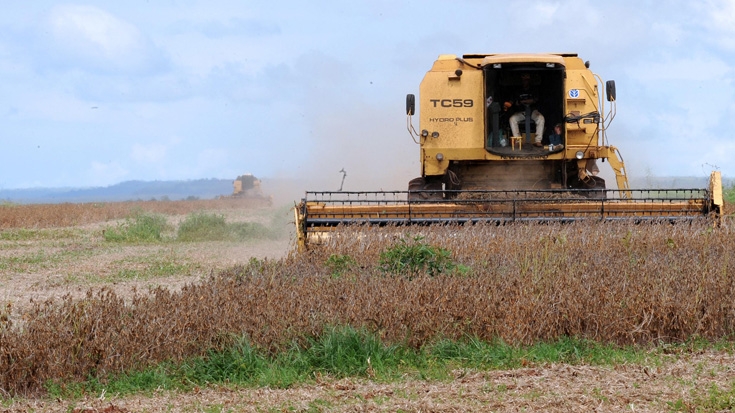In a little over 30 years, 500 million people escaped poverty in China, and the country became the world’s second-largest economy and leading producer and exporter of manufactured goods.
In less than 20 years, in 2030, this record of enormous advances is expected to change pace, when the annual economic growth rate is expected to decline from the current 30-year average of 10% to between 3.5% and 6.9% --all as a result of an aging population and an economic model that is more ‘qualitative’ than expansive.
Given that China is a key trade partner of Brazil and that relations between the two countries will gain momentum at the BRICS Summit this week, the question is: Is this deceleration harmful for the South American giant, and consequently, for its partners in the region? Not necessarily, according to five experts who met this week in Brasilia for the presentation of the World Bank report: “Implications of a changing China for Brazil: a new window of opportunity?”
Brazil can take advantage of the changing economic situation of its partner in five ways:
1. Make Brazilian commodities China’s favorites
Brazil can become a leading exporter to China. Even in the midst of an economic slowdown, the Chinese consumer market will continue to grow to 2030, which will raise demand for imports, mainly foodstuffs and other agricultural products. This demand would enable Brazilian exports to China to grow between 8% and 12% annually. This figure is above the global average, estimated at between 6% and 9% annually. Brazil can also take advantage of this opportunity to…
2. Import fewer “Made in China” products and export more “Feito no Brazil” goods
Currently, Brazil exports nearly 1,200 products to China while it imports some 3,500. “Brazilian exports to China are much less sophisticated than its imports,” said economist Jorge Araújo, one of the authors of the report. This asymmetry also is observed in other Latin American countries that do business with China, including Mexico and Argentina. The study highlights several opportunities to sell much more sophisticated products and services to China (machinery, chemicals, accounting and auditing services, for example). To this end, it is necessary to:
3- Produce more...qualified workers, and consequently, become more competitive
"We never had and never will have so many young people in Brazil again: currently there are 51 million,” said Marcelo Neri, chief minister of the Secretariat of Strategic Affairs of the President’s Office, who participated in the meeting in Brasilia. Investing in education and science for this population means producing more qualified workers, which increases the possibility of exporting more complex products in 2030. Additionally, improving the infrastructure of ports, roads, railways and airports enables products to reach China more quickly and at competitive prices. “Finally, it is important to discuss a fiscal reform that reduces Brazil’s costs,” says Araújo. Besides this internal transformation, it is essential for Brazil to….
4. Overcome Chinese and Brazilian tariff walls
Both China and Brazil have imposed tariff barriers on products where the other has a comparative advantage. Together with tariff escalation, this has affected Brazil’s ability to diversify into higher value-added exports to China. “This would involve lowering tariff rates and eliminating other types of temporary trade barriers like subsidies, tax benefits for particular sectors and local content requirements as these would contribute to sustained productivity growth by enhancing the exposure to competition, “ according to the study. “Similarly, in the case of demonstrated unfair trade practices, these would need to be resolved as well.” And finally…
5. Export what Brazil knows about social programs
While this measure is not specifically mentioned in the World Bank report, experts like Marcelo Neri have alluded to it. "I always hear the Chinese asking about Bolsa Familia (Brazil’s largest social program). They are very interested,” he says. After all, the program contributed to reducing extreme poverty from 9.7% to 4.3% over the past decade whereas social inequality figures for China fluctuated during that period. This year, Brazil and the World Bank implemented a global knowledge network to fight poverty, which could support China in this phase of its development.

